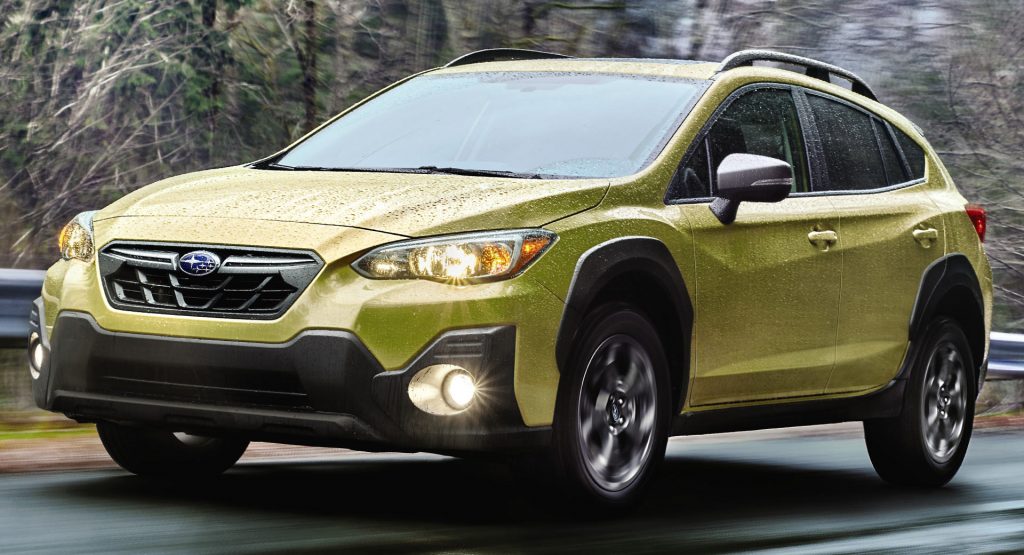Subaru has always been known for offering practical and adventure-ready vehicles, but in recent years, the brand has taken a major leap forward in terms of perceived reliability. What used to be considered a dependable but niche brand has now transformed into one of the most trusted names in the auto industry.
This shift hasn’t gone unnoticed—Consumer Reports ranked Subaru as the best overall car brand in the world, based on road test performance, predicted reliability, and owner satisfaction. Furthermore, in 2024, Subaru topped the charts as the most reliable car brand globally, solidifying its status among the automotive elite.
5 Subarus That Last Through Anything
When it comes to building cars that stand the test of time, few brands are as synonymous with durability and reliability as Subaru.
Known for their all-wheel drive systems, rugged design, and ability to tackle tough conditions, Subarus have earned a loyal following among drivers who need vehicles that can go the distance—literally.
Whether you’re navigating icy mountain roads, tackling off-road trails, or simply looking for a long-lasting car to get you through everyday life, Subaru has a model for you. In this article, we’ll highlight five Subarus that are built to last through anything, offering reliability, performance, and peace of mind for years to come.
2021 Subaru Crosstrek
One of Subaru’s standout models is the 2021 Subaru Crosstrek. Thanks to its solid build quality, upgraded features, and two powertrain choices, this model is one of the most dependable vehicles the company has produced.
The addition of a more powerful 2.5-liter engine gave drivers better performance without sacrificing fuel efficiency or long-term reliability. With symmetrical all-wheel drive as standard and 8.7 inches of ground clearance, the Crosstrek is built for all types of terrain.
When it comes to rugged, car-based crossovers, Subaru continues to stand out from the crowd. The 2021 Crosstrek subcompact SUV embodies the brand’s core identity, delivering a well-rounded package that’s compact, practical, and unmistakably Subaru.
Built on the same platform as the Impreza hatchback, the Crosstrek retains a carlike driving feel, while offering increased ground clearance and a more SUV-like, rugged exterior.
For those interested in going green, a plug-in hybrid version is available. If electrification isn’t your thing, Subaru also offers two traditional gasoline-powered engines, both using the brand’s signature horizontally opposed four-cylinder configuration.
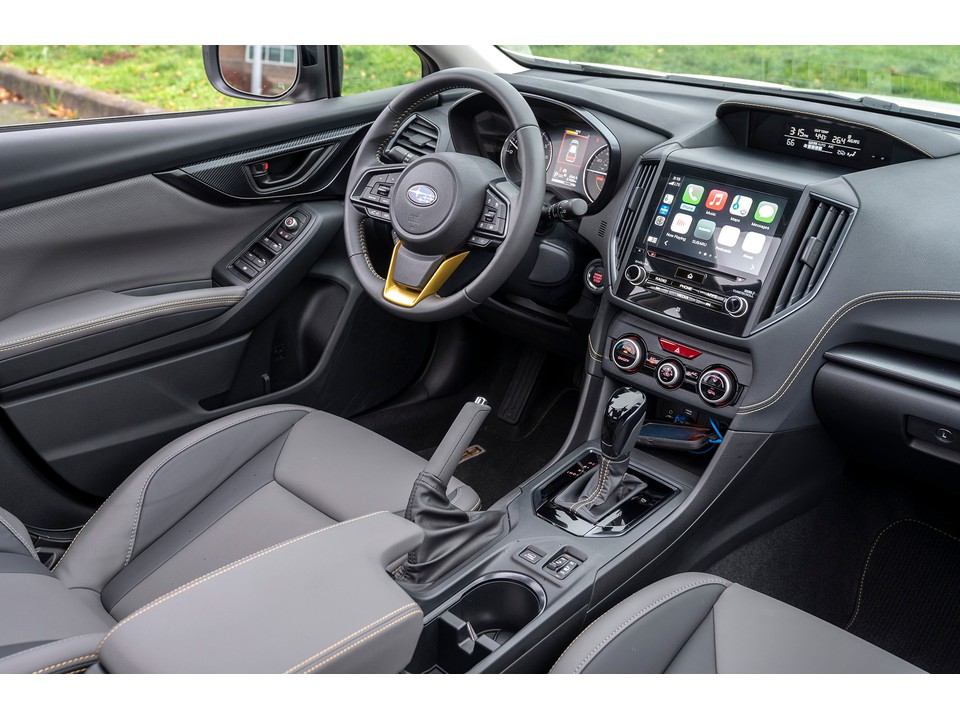
While the Crosstrek isn’t designed to handle the kind of extreme, rock-crawling trails that Jeeps thrive on, it still delivers the dependable all-weather performance that drivers expect from Subaru.
Much like its bigger siblings—the Forester and the Ascent—it’s packed with features for the price and provides a comfortable, though somewhat uninspiring, cabin.
For 2021, the Crosstrek receives a subtle visual update, including redesigned front bumper and grille elements.
More significantly, Subaru has introduced a new Sport trim along with a more potent engine option. Borrowed from the Legacy sedan and Outback wagon, the 2.5-liter flat-four engine brings a noticeable performance boost and is now available in the Sport and Limited trims.
The base and Premium models, however, still use the less powerful 2.0-liter engine. The new Sport model also features several exclusive upgrades, including specialized drive modes—Snow/Dirt and Deep Snow/Mud—designed to enhance the vehicle’s standard all-wheel-drive system for tougher conditions.
Also Read: Top 10 Most Reliable & 5 Least Reliable Diesel Cars
2023 Subaru Forester
Another major win for Subaru is the 2023 Subaru Forester, which perfectly blends versatility with trusted reliability. With a 2.5-liter flat-four Boxer engine and symmetrical all-wheel drive, the Forester offers dependable performance across a wide range of driving conditions.
It also features the brand’s EyeSight Driver Assist Technology, which enhances both safety and user satisfaction. The 2023 Subaru Forester offers rugged styling and a practical interior, making it a compact crossover with outdoor appeal.
While its driving dynamics don’t quite match up to competitors like the Honda CR-V or Volkswagen Tiguan, the Forester provides a quiet and comfortable ride that gets you to your next adventure without fuss. Its spacious rear cargo area is ideal for larger items, and the cabin is filled with thoughtful storage solutions.
All-wheel drive comes standard across the range, but the 182-hp flat-four engine lacks the power to make the Forester feel particularly exciting. Nevertheless, the Forester is well-equipped, with every trim offering Subaru’s suite of standard driver-assistance features, except for the base model, which feels a bit too minimalist.
The Forester ranks #10 among the best compact SUVs for 2023, trailing behind more dynamic rivals like the Honda CR-V and Mazda CX-50.
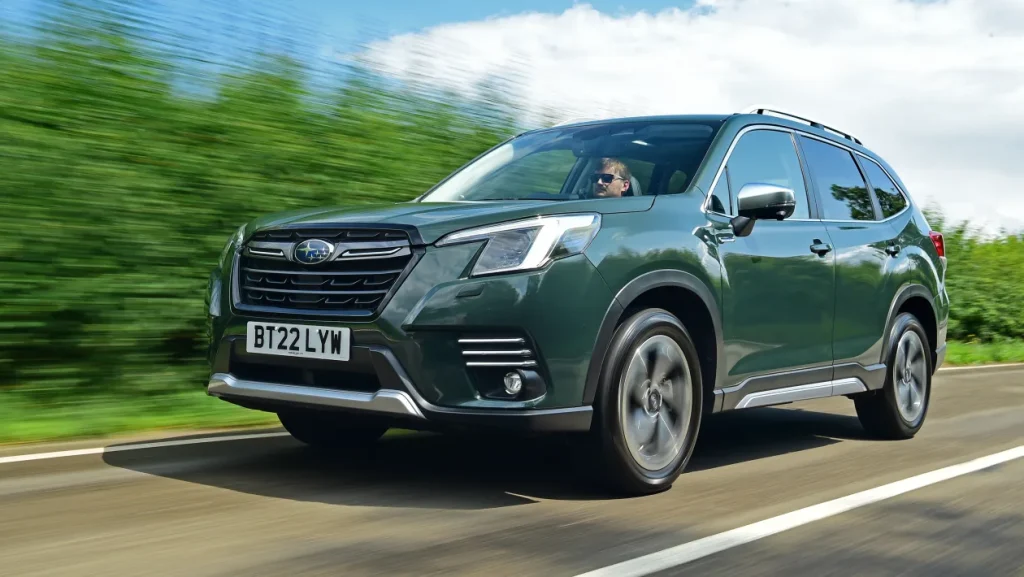
However, it remains a strong choice for those seeking practicality and off-road capability. After a styling refresh in the previous model year, the 2023 Forester sees no changes. It is still available in a variety of trims, from the value-oriented base and Premium models to the rugged Wilderness and upscale Touring versions.
The 2023 Subaru Forester starts at $27,620, with prices rising to $38,020 depending on the trim level and optional features. The Premium model offers the best balance between cost and features, making it the most recommended choice.
Exterior upgrades, such as 17-inch wheels, a rear spoiler, and body-colored side mirrors, help improve its look, while the interior includes a panoramic sunroof, a 10-way power-adjustable driver’s seat, reclining rear seatbacks, an onboard Wi-Fi hotspot, and a six-speaker sound system.
All Forester models come with the same 2.5-liter flat-four engine that produces 182 horsepower, mated to a continuously variable automatic transmission (CVT) and Subaru’s all-wheel-drive system.
This setup provides adequate performance, though it’s not particularly thrilling, with the Wilderness trim reaching 60 mph in 8.0 seconds during testing.
Those seeking more power may prefer the turbocharged options available in the Mazda CX-5 or Kia Sportage. Despite its lack of sporting performance, the Forester handles well, with a comfortable ride, responsive steering, and strong braking for emergency stops.
2021 Subaru Forester
The 2021 Subaru Forester is one of the most reliable and well-rounded models in Subaru’s recent lineup. Powered by a durable 2.5-liter flat-four Boxer engine and featuring Subaru’s signature all-wheel drive, the Forester delivers consistent performance and fuel efficiency suited for both city driving and outdoor adventures.
The 2021 model also comes standard with Subaru’s EyeSight Driver Assist Technology, contributing to its top safety ratings. Owners often highlight its low maintenance needs, robust build quality, and spacious interior, all of which make it a go-to option for long-term dependability.
Subaru’s reputation for standard all-wheel drive and its adventurous image fit perfectly with the Forester compact SUV.
While it seems to compete with the Outback station wagon in terms of size and functionality, the Forester provides a more traditional SUV driving position, offering better outward visibility thanks to larger windows and a slightly higher ground clearance.
The cabin is designed with practicality in mind, offering plenty of useful storage spaces and a touch of stylish flair. Under the hood is a four-cylinder engine that provides adequate power and decent fuel economy.
The Forester’s main competitors—such as the Honda CR-V and Toyota RAV4—offer more powerful engines and a more engaging driving experience, but the Forester’s smooth ride and relaxed handling will appeal to buyers who prioritize other qualities in their vehicle.
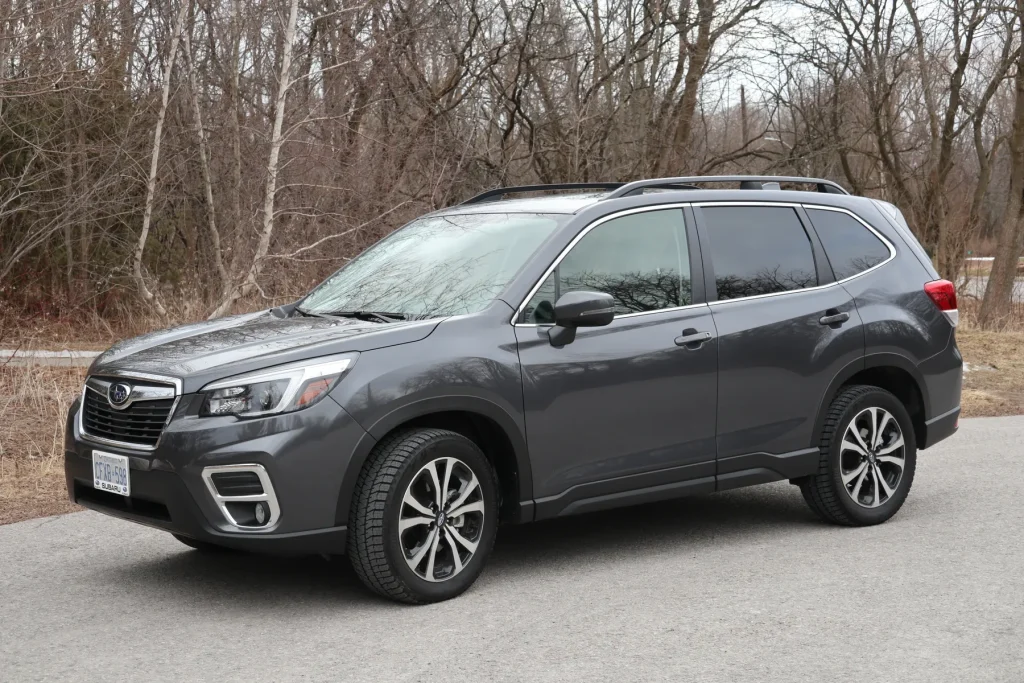
The 2021 Subaru Forester ranks #8 in the Best Compact SUVs list, behind more dynamic rivals like the Mazda CX-5 and Honda CR-V.
Despite this, the Forester remains a popular choice due to its balance of practicality, comfort, and Subaru’s signature all-wheel-drive system. For 2021, Subaru has made adaptive LED headlamps and automatic high beams standard across the Forester range.
Additionally, the Limited model now comes with a seven-speed manual mode for the continuously variable automatic transmission (CVT), and a new rear center-console storage tray has been added to all models except the base version.
The price of the 2021 Subaru Forester starts at \$25,845, with higher-end trims reaching up to \$35,945 depending on the options and configuration. While the Limited and Touring trims offer more luxurious features, the Premium model is recommended as the best balance of value and features.
This trim includes exterior upgrades like 17-inch wheels, a rear spoiler, and body-colored side-view mirrors. The interior offers additional comforts such as a panoramic sunroof, a 10-way power-adjustable driver’s seat, reclining rear seatbacks, an onboard Wi-Fi hotspot, and a six-speaker sound system.
Every Forester is powered by a 2.5-liter flat-four-cylinder engine that produces 182 horsepower and is capable of towing up to 1,500 pounds.
The engine’s power is routed to Subaru’s all-wheel-drive system via a continuously variable automatic transmission (CVT). At our test track, the 2019 Forester Touring version took 8.5 seconds to reach 60 mph—not the most exciting performance, but sufficient for most buyers.
Those seeking more power should consider the Honda CR-V or the turbocharged versions of the Mazda CX-5 and Kia Sportage. In terms of handling, the Forester performs competently. The ride is smooth and refined, the steering is responsive, and the brakes provide adequate stopping power for emergency situations.
Also Read: 10 Best Cars for Families and 5 You Might Regret
2023 Subaru Crosstrek
Moving on to the 2023 Subaru Crosstrek, this model continues the brand’s tradition of combining ruggedness with reliability. It offers two Boxer engine options: a 2.0-liter and a more powerful 2.5-liter, both known for dependable performance and minimal upkeep.
With standard all-wheel drive and a tough exterior design, the Crosstrek handles all-weather and light off-road conditions with ease. Most trims also include Subaru’s advanced safety systems, boosting the vehicle’s overall reliability and safety credentials.
The 2023 Crosstrek enjoys a strong reputation for longevity and remains a popular pick among adventure-seeking drivers. Subaru Crosstrek may appear more rugged and adventure-ready than it truly is, but it still outperforms many of its subcompact SUV competitors when it comes to off-road capability.
With up to 9.3 inches of ground clearance, standard all-wheel drive, and a fuel-efficient four-cylinder engine, the Crosstrek offers solid features for those seeking some adventure. The base model comes with a 2.0-liter engine that produces a modest 152 horsepower, while all other trims are equipped with a 2.5-liter engine that delivers 182 horsepower.
Neither engine offers particularly exciting performance, but for casual drivers, they provide enough power for commuting and road trips. The Crosstrek’s handling is competent but not particularly engaging. Inside, the cabin is practical and comfortable, though it lacks the refinement found in more upscale models.
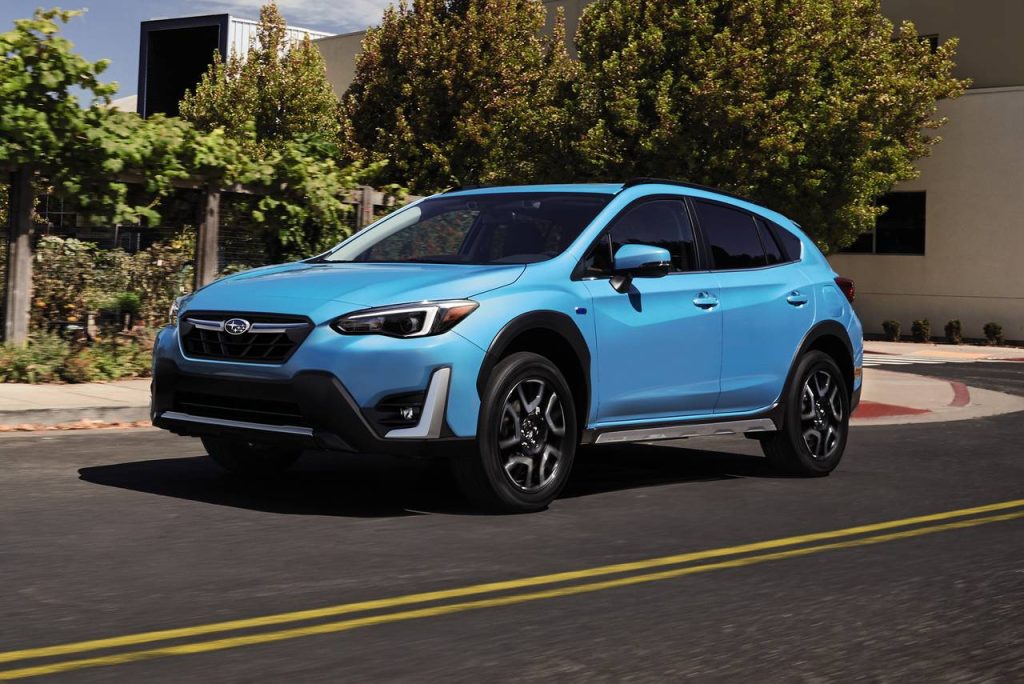
If you’re looking for a more responsive driving experience or a higher level of luxury, alternatives like the Mazda CX-30 or Volkswagen Taos may be better suited to your needs. Despite these shortcomings, the Crosstrek remains one of our top picks in the subcompact SUV segment and has earned a place on our 2025 Editors’ Choice list.
Ranking #6 in Best Subcompact SUVs, the Crosstrek competes with the Chevrolet Trax, Mazda CX-30, and Volkswagen Taos, among others. While the 2025 model has few changes, the 182-hp four-cylinder engine now comes standard on all trims except for the base model, following a redesign in 2024.
Pricing for the 2025 Subaru Crosstrek starts at $27,230 and can go up to $34,030 depending on the trim and options selected. The Premium trim is our top recommendation.
It provides a slight price increase in exchange for the more powerful 182-hp engine, a larger 11.6-inch infotainment display, wireless Apple CarPlay and Android Auto integration, and roof rail cross bars.
All models, except the base, come equipped with the 182-hp 2.5-liter engine, and a continuously variable automatic transmission (CVT) is the only transmission option. As is typical for Subaru, all-wheel drive is standard.
The Crosstrek’s driving dynamics are focused more on comfort than sport, with a soft ride and relaxed handling. While its cornering abilities are sufficient, it doesn’t offer the same level of driving excitement as the Mazda CX-30 or Volkswagen Taos.
However, the Crosstrek is likely better suited for light off-road adventures, with a minimum of 8.7 inches of ground clearance, hill-descent control, and hill-start assist.
The Wilderness trim enhances this capability with 9.3 inches of ground clearance and more aggressive all-terrain tires. During our test drive, we took the Crosstrek on rutted two-track roads and light off-road trails in Joshua Tree National Park outside Palm Springs, California, where it performed admirably, showcasing its off-road potential.
2020 Subaru WRX
The 2020 Subaru WRX stands out as a dependable performance sedan, offering both power and reliability in a sport-oriented package. Equipped with a 2.0-liter turbocharged flat-four engine and Subaru’s renowned Symmetrical All-Wheel Drive, the WRX delivers exceptional traction and road control.
The vehicle’s solid construction and well-balanced performance make it an ideal choice for enthusiasts who crave driving excitement without sacrificing dependability. The standard six-speed manual transmission enhances the WRX’s driver-focused appeal, though a CVT is also available for those preferring an automatic.
When paired with the manual gearbox, the WRX accelerates from 0 to 60 mph in just 5.5 seconds and maintains confident handling in all weather conditions.
The 2020 Subaru WRX makes a bold statement with its unapologetic, rally-inspired personality. Loud and lively, it embraces its rough-and-tumble character, proudly showcasing its rally-car roots.
The steering is responsive and quick, the ride is firm, and the excitement it delivers is abundant—provided you’re willing to sacrifice a smooth, quiet ride and an upscale interior in favor of raw performance and thrills.
Standard all-wheel drive and powerful brakes enhance the effectiveness of the turbocharged 268-hp flat-four engine, delivering exhilarating acceleration. While there are other cars that strike a better balance between performance and refinement, the 2020 WRX packs enough excitement to fuel your adrenaline.
For 2020, the WRX continues to maintain its rebellious spirit, but Subaru has added a few new features to keep things engaging. The Performance package includes Brembo brakes with red calipers (four-piston in the front, two-piston in the rear), a sunroof delete to reduce weight, and Recaro performance front seats.
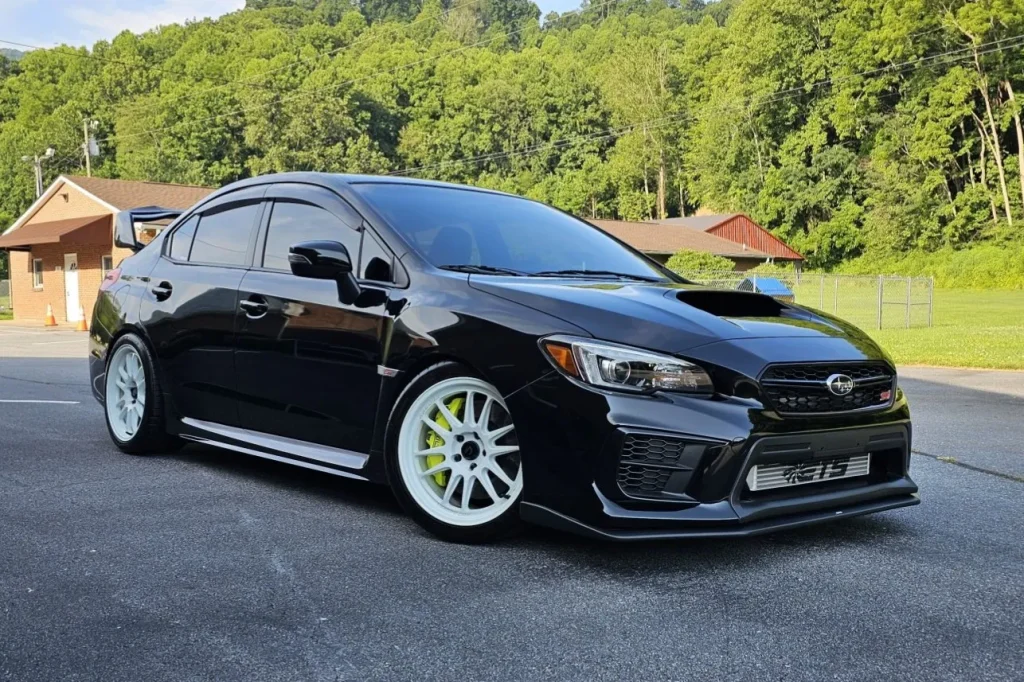
The driver’s seat also now features eight-way power adjustability, proving that even performance-oriented cars can offer some comfort. Premium trim levels and higher now come with approach lighting, and the headlamps will automatically activate when the windshield wipers are engaged.
The 2020 Subaru WRX has a starting price of $28,395 and can go up to $34,895 depending on the trim and options selected. With base, Premium, and Limited trims closely matched in features and pricing, prospective WRX buyers will need to carefully consider their options.
If we were choosing, we’d opt for the mid-level WRX Premium. Sticking with the six-speed manual transmission saves $1,900 compared to the continuously variable automatic transmission (CVT), while also providing a more engaging driving experience. Driving the WRX on a twisty gravel road with a manual gearbox is a great stress reliever.
While the base model offers nearly all the same thrills, the $2,850 Performance package is only available on the Premium. At $33,545, it provides an excellent mix of performance and features for those who know exactly what they want.
The WRX is powered by a turbocharged 2.0-liter flat-four engine that generates 268 horsepower and 258 lb-ft of torque, with all-wheel drive to put that power to the ground. Whether paired with the standard six-speed manual transmission or the optional CVT available on Premium and Limited models, the WRX offers exhilarating acceleration.
In fact, the last WRX we tested accelerated from zero to 60 mph in an impressive 5.5 seconds, a top-tier time in its class. However, in daily driving, the WRX’s power delivery can sometimes be frustrating, as the turbocharged engine exhibits initial hesitation followed by a sudden surge of power, making it more unpredictable than pleasurable at times.
Subaru Cars That Are Less Desirable
Subaru has never been particularly celebrated for sleek, stylish designs—this is a brand that prioritizes function and performance over conventional aesthetics. While that’s long been a part of Subaru’s identity, it’s also true that not all models are equally forgivable in their looks.
Some are shrugged off with the typical “that’s just Subaru being Subaru” sentiment, while others are so visually off-putting that they border on offensive. Even Subaru acknowledges its design shortcomings.
Whether or not Subaru succeeded in making its post-2017 vehicles more attractive is still a matter of personal taste. In fact, after diving deep into online discussions and forums filled with diehard Subaru fans, it’s clear that some of the brand’s older models remain infamous for their looks.
Among them, a few are not just unappealing—they’re downright bizarre. Below is a list of Subaru’s most visually polarizing designs from past decades, where “emotionally appealing” is the last thing that comes to mind.
Subaru Impreza Casa Blanca
One of the most infamous is the first-generation Subaru Impreza Casa Blanca. This model feels like the result of a Frankenstein-style design experiment—various elements from other cars clumsily merged into a disjointed and awkward final product.
The front end is especially jarring, featuring a clunky, outdated grille, recessed headlights, and a gratuitous amount of chrome trim intended to mimic a retro Japanese aesthetic from the 1990s.
Unfortunately, it misses the mark entirely, coming off more as a mismatched disaster than a nostalgic throwback. The rear is slightly more palatable, with red and orange taillights that faintly echo the Nissan GTR’s design language—though, once again, unnecessary chrome undermines any potential appeal.
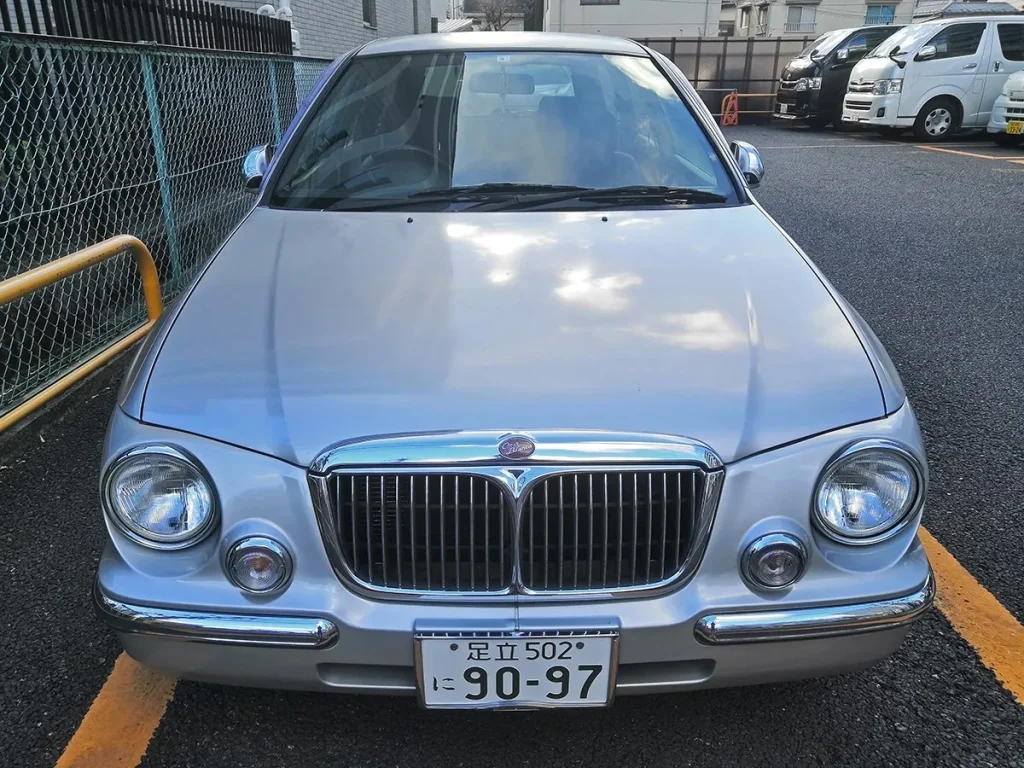
Despite this, the Casa Blanca has developed a small cult following. Some enthusiasts claim it falls into the “so ugly it’s charming” category.
Technically, the Subaru Impreza Casa Blanca was a limited-edition styling package offered for the first-generation Impreza, aiming to ride the wave of Japan’s retro car trend in the late ‘90s. While the visual design didn’t quite capture the intended retro charm, the car’s performance stayed true to Subaru’s roots.
It came with a 1.5-liter EJ15 engine that pushed out just 94 horsepower and 103 lb-ft of torque—certainly not impressive by modern standards. But if nothing else, it came with more than enough chrome to leave a lasting impression.
First generation Subaru B9 Tribeca
The first-generation Subaru B9 Tribeca marked the brand’s debut attempt at crafting a three-row SUV tailored to American consumers—and that inexperience is painfully evident.
It’s clear Subaru was out of its depth when designing this vehicle, as the Tribeca ended up featuring some of the most questionable design elements seen on U.S. roads. The most glaring issue is its oddly small front grille, which lends the car a pug-like, awkward appearance.
Beyond the awkward proportions, the wide spacing between the grille slats only adds to its tackiness. Critics across the board were equally unsparing in their assessments. The Tribeca’s aesthetics became a punching bag for auto journalists, and even Subaru weighed in when the model was discontinued in 2014.
According to the company, “The model was quickly found to be too small for the U.S.” Regardless of whether it was the unappealing front end or its failure to compete in size against other SUVs, the result was a commercial flop—Subaru only sold 1,598 units in 2013, a figure that speaks volumes.
In a world that constantly evolves, it’s refreshing to see that some things remain unchanged—such as Subaru’s commitment to producing cars with, let’s say, questionable styling. Their latest offering, the Tribeca (or B9 Tribeca, to give it its full name), is arguably their most controversial yet.
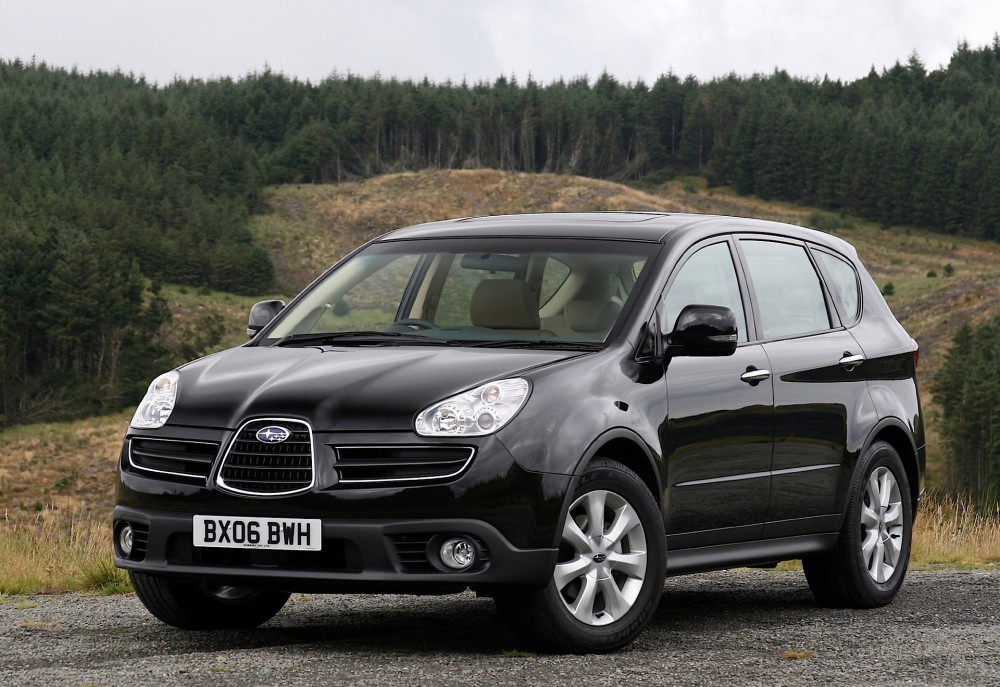
However, don’t immediately assume this is a negative. The Tribeca is so unattractive that it almost circles back to being cool—almost.
It certainly attracts a lot of attention when you drive it, but whether that attention is born out of admiration or mockery is unclear. The irony of naming it after TriBeCa, a trendy area in New York, seems to have been completely overlooked.
The Tribeca marks Subaru’s first venture into the SUV market, and it is also the first all-new vehicle to come from the Japanese automaker since the Legacy in 2003.
As a result, the interior feels less outdated than what you might expect from other Subaru models, but don’t mistake that for it being on par with the best in the class. It’s still very much an acquired taste.
The build quality feels decent, but the plastics used in the cabin come across as cheap. Additionally, the steering wheel doesn’t adjust for reach, which compromises the seating position.
When it comes to family-friendliness, the Tribeca delivers with its option of either a five- or seven-seat configuration—but we recommend sticking with the five-seat version.
If you opt for the seven-seat layout, you’ll need to spend an extra £2,000 for a third row, which offers very limited legroom. At least that extra cost includes a DVD system, though.
Third to sixth generation Subaru Forester
Shifting to another controversial design chapter, the third through sixth generations of the Subaru Forester also drew mixed reactions, especially among longtime fans.
While the Forester has always had a bit of a divisive look, its earlier versions—particularly the boxy, flat-hooded models of the late ’90s—still had a certain charm for some. When it launched in the U.S. in 1998, its distinct shape helped it stand out in a crowded crossover SUV market. Sure, it wasn’t conventionally attractive, but it had character.
However, many enthusiasts feel that newer Forester models, especially from 2009 onward, have lost that unique Subaru flair.
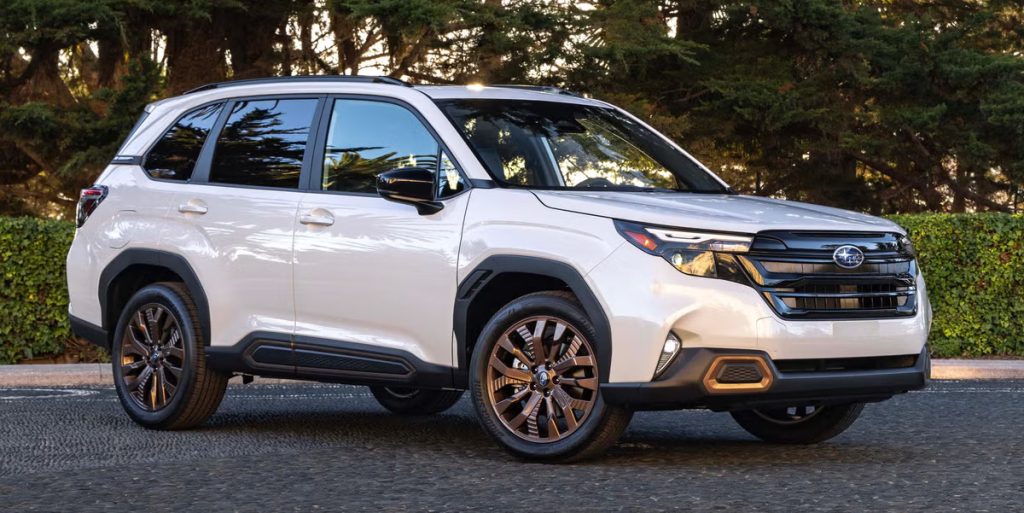
These more recent versions blend into the crowd, adopting a more generic and mainstream design language that disappointed fans who appreciated the brand’s quirkier, bolder styling. For them, the word “ugly” may be a stretch, but the shift toward uniformity hasn’t been well received.
The publication highlighted its expansive cargo area, user-friendly interior featuring a large touchscreen display, and respectable off-road capabilities. It may not be the standout SUV of its segment, but it delivers where it counts—even if it does so without turning heads for the right reasons.
Fifth generation Subaru WRX
The fifth-generation Subaru WRX, introduced in 2022, has sparked a considerable amount of backlash—not due to its performance, but largely because of its appearance. This criticism hasn’t faded with time, and as of 2025, the complaints about its design persist.
There’s no doubt that the WRX offers an engaging driving experience, with nimble handling and a sporty feel that enthusiasts appreciate. Once you’re behind the wheel, there’s little to complain about in terms of performance. However, the moment you step outside and take in the car’s exterior, the flaws become hard to ignore.
The quality of the WRX’s exterior design just doesn’t measure up. The plastic cladding around the wheel arches and lower body is particularly prone to damage, making it a poor choice for anyone considering serious off-road use. Even from a purely aesthetic standpoint, the design feels uninspired and disjointed, with awkward lines and an overall lack of cohesion.
Critics have even gone as far as comparing it to a “Toyota Corolla knock off,” highlighting how bland and unremarkable the exterior has become. There’s nothing distinctive or bold about the styling, which makes the WRX look far less exciting than it drives.
For those seeking a car better suited to fast-paced, rugged terrain, the Subaru Impreza is a far more compelling option.
Often hailed as one of the best rally cars for beginners, it brings a more cohesive balance of style and function. As for the WRX, it still gets the job done in the right areas, but its lackluster looks and potentially expensive exterior repairs make it a tougher sell—especially for design-conscious buyers.
After decades of making a name for itself with fiery performances and gravel-spraying antics on rally stages—or at least looking the part on the streets—the Subaru WRX has reached a milestone: middle age.

Now in its fifth generation following a redesign for the 2022 model year, Subaru’s iconic proto-rally car has stepped up its game, donning a more refined look and gaining a level of sophistication. This shift is most evident in the WRX’s top-of-the-line GT version, which is automatic-only.
The WRX has been available with an automatic transmission for years, but the latest iteration comes with a CVT featuring eight simulated ratios.
This option, priced between $1,850 and $2,250, is available across all trim levels, including the $30,600 base model. Subaru still offers a six-speed manual transmission as standard, paired with the 271-hp turbocharged 2.4-liter flat-four engine.
However, the new fully equipped GT model is exclusively available with an automatic and carries a price tag of $43,390. For a WRX, that’s $5,220 more than the starting price of the previous 310-hp STI model, which won’t be returning for this generation (though the STI name may be revived for a future performance EV based on a different platform).
To put things into perspective, Volkswagen GTIs can also be configured with options that push them past $40K, so the concept of an affordable sport compact car has become a bit more flexible in today’s market.
Sixth generation Subaru Outback Wilderness
Turning to the sixth-generation Subaru Outback Wilderness, it’s clear that Subaru’s focus on rugged functionality has taken a polarizing turn. The standard Outback is a well-respected model, known for its durability and off-road prowess.
However, the Wilderness edition has taken things too far for many, especially when it comes to its overuse of plastic trim. This version is absolutely loaded with oddly shaped, aggressively applied plastic cladding that dominates its appearance.
If you thought the WRX was excessive with its plastic, the Wilderness package doubles down. From the wheel arches to the bumpers, the plastic trim is not only aesthetically jarring but also perceived by many off-road enthusiasts as cheap and lacking in durability.
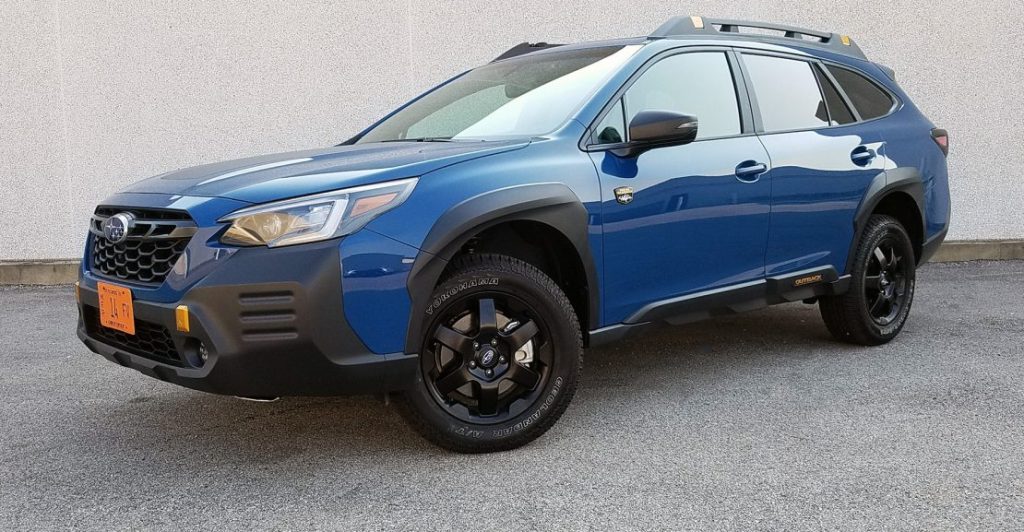
The styling feels chaotic—almost like a symbiote has engulfed the vehicle. It’s a bold look, but one that only appeals to a niche group of buyers with very specific tastes. That said, the Outback Wilderness still has its merits.
However, they also noted that the differences between the standard Outback and the Wilderness version are marginal at best, especially when you consider the price increase and the unappealing design. For many buyers, skipping the Wilderness trim might be the wiser—and more budget-friendly—choice, not to mention easier on the eyes.

